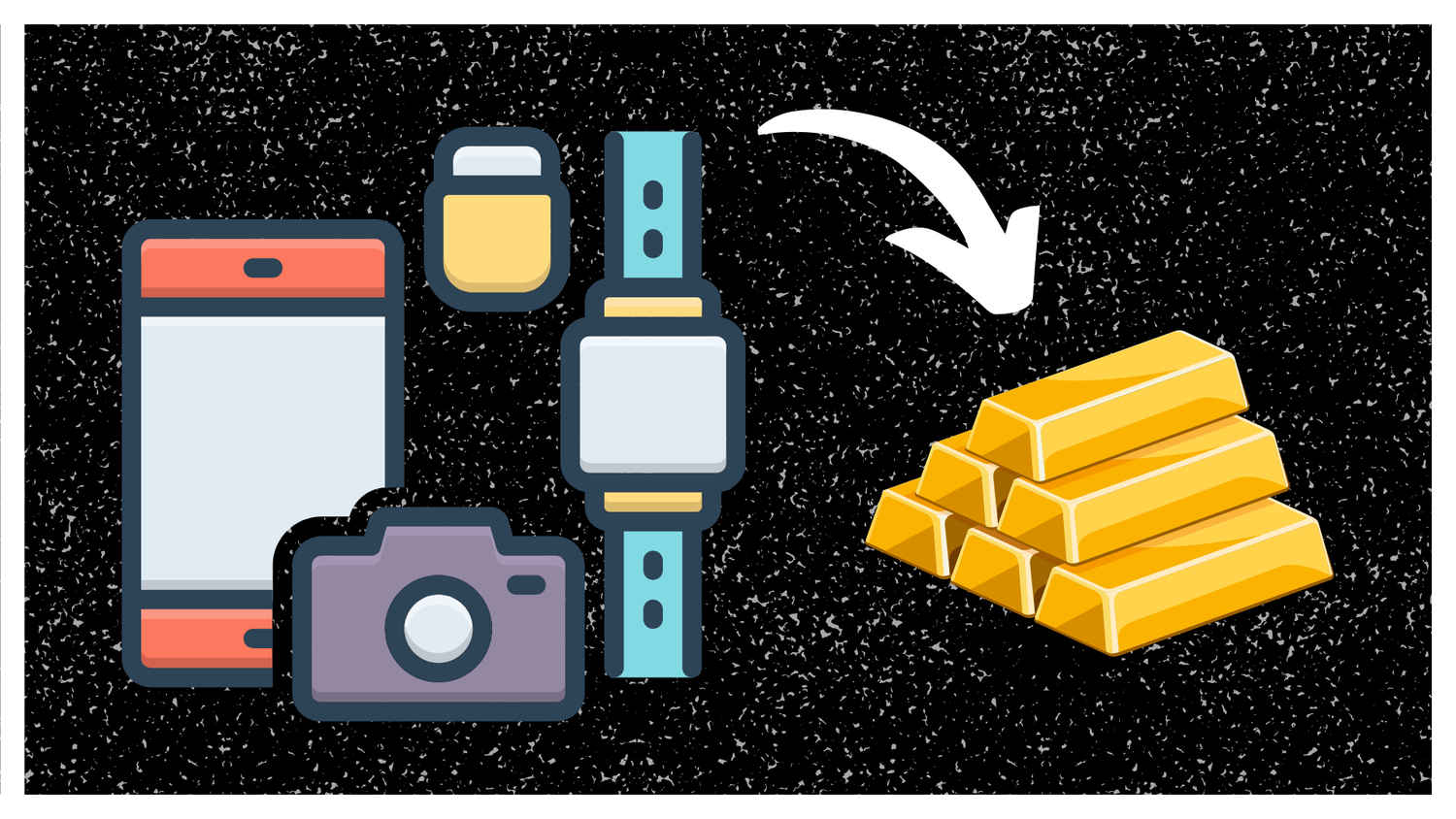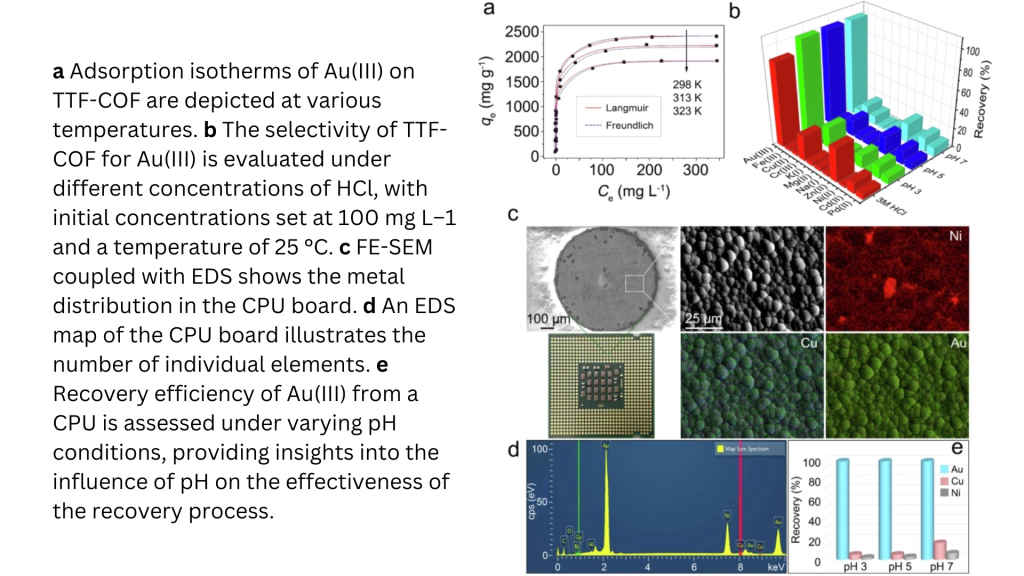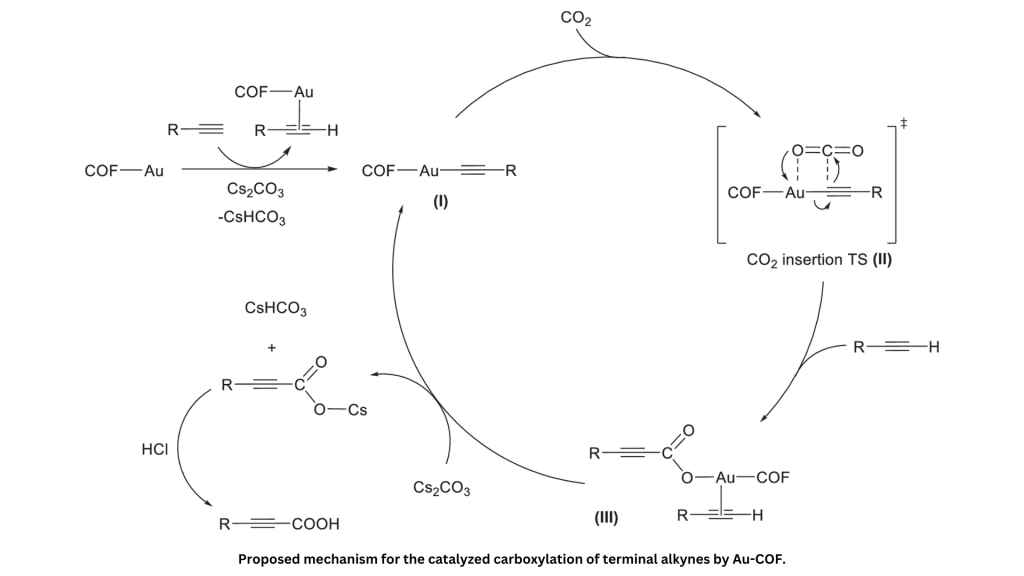How recycling gold from e-waste can transform sustainable chemistry?

E-waste is often considered an environmental hazard, but recent advancements in recycling technology have revealed its potential as a goldmine – quite literally. Globally, we generate an estimated 50 million tons of e-waste annually, a figure expected to double by 2050. This rapidly growing waste stream contains valuable resources like gold, silver, and copper, with over $57 billion worth of recoverable materials discarded each year. In their paper, titled – “Recycling e-waste into gold-loaded covalent organic framework catalysts for terminal alkyne carboxylation” – researchers from Cornell University published their findings about advanced technologies to tap into this resource, turning discarded electronics into catalysts for critical chemical processes.
 Survey
SurveyEvery year, we generate a staggering 50 million tons of e-waste globally, presenting not just an environmental challenge but also a golden opportunity for resource recovery. Scientists have been pushing the boundaries of material science to extract gold from discarded electronics, turning this waste into catalysts for essential chemical processes. At the forefront of this transformation are covalent organic frameworks (COFs), cutting-edge materials engineered to extract and repurpose gold ions with incredible precision.
Mining gold from electronics
Gold’s allure isn’t just aesthetic; it’s critical in electronics for its exceptional conductivity and resistance to corrosion. However, mining it traditionally is an environmental nightmare, often involving cyanide-based leaching and large-scale deforestation. Enter “urban mining,” a sustainable approach that focuses on recovering precious metals from e-waste. This concept is quickly gaining traction as industries seek greener alternatives to conventional mining.

Think about this: the average smartphone contains around 0.034 grams of gold. While this seems trivial, multiply it by billions of devices, and the numbers add up. Current recycling methods recover about 25% of the world’s gold, but they struggle with efficiency and selectivity when dealing with complex metal mixtures. This is where advanced materials like COFs come into play, offering a game-changing solution for gold recovery.
Also Read: Human eye-inspired technology called “AMI-EV” could revolutionise smartphone cameras!
Why COFs are a game-changer?
COFs, or covalent organic frameworks, are essentially molecular sieves on steroids. These materials are highly porous, lightweight, and chemically tunable, making them perfect for capturing specific metal ions. Two COFs, in particular, have stolen the spotlight: TTF-COF and TPE-COF. Designed using tetrathiafulvalene (TTF) and tetraphenylethylene (TPE), these frameworks are engineered for maximum efficiency in gold adsorption.
Here’s the kicker – TTF-COF’s sulfur-rich structure interacts with gold ions through a soft acid-base interaction. This allows it to adsorb gold with jaw-dropping efficiency – 2440 mg of gold per gram of COF. To put that into perspective, it can capture over 99% of gold from a solution, even when competing metals like nickel and copper are present. This selectivity is a big deal because it minimises the need for additional processing steps.
Moreover, the robustness of TTF-COF ensures it can be reused multiple times without losing efficiency. Its tightly packed crystalline structure maintains consistent performance, even under challenging conditions. On the other hand, TPE-COF, while still effective, doesn’t quite match up due to its less sulfur-dense framework. But the innovation doesn’t stop at gold recovery. Once loaded with gold, these COFs are repurposed as catalysts for the carboxylation of terminal alkynes – a fancy way of saying they help convert carbon dioxide into valuable organic compounds. This reaction is a cornerstone of green chemistry, tackling CO2 emissions while producing useful materials.

Under modest conditions – ambient CO2 pressure and moderate temperatures – gold-loaded COFs transform alkynes into propiolic acids with exceptional yields. What’s more, these COFs retain their catalytic prowess over multiple cycles, proving their durability and cost-effectiveness. Unlike traditional catalytic systems relying on rare metals like platinum or silver, COFs offer a more sustainable and affordable alternative.
Also Read: Skullcandy EcoBuds Review – Budget and environment friendly TWS
Bridging e-waste management and clean energy
What makes this approach so revolutionary is its dual impact: reducing e-waste while advancing clean energy solutions. By reclaiming gold from discarded electronics, researchers address a massive environmental issue and create a platform for sustainable innovation. At the same time, these COFs align with global efforts to repurpose CO2, turning a greenhouse gas into a resource.
The practical advantages are equally compelling. COFs are synthesised using relatively simple methods, such as solvothermal reactions, and rely on readily available precursors. This scalability makes them attractive for industrial applications. Moreover, their stability and reusability mean they won’t need frequent replacement, reducing long-term costs.
Despite their promise, COFs aren’t without challenges. Scaling their production to industrial levels is no small feat. Current synthesis methods, while effective, require optimisation for speed and cost efficiency. Researchers are exploring innovations like automated production and one-pot reactions to simplify the process.
Then there’s the question of e-waste collection. Efficiently gathering and preprocessing discarded electronics varies widely by region, influenced by infrastructure and local policies. Standardised recycling protocols and financial incentives could go a long way in addressing this issue. Additionally, integrating COF-based recovery systems into existing recycling setups will require cooperation between policymakers, scientists, and industry leaders.
Satvik Pandey
Satvik Pandey, is a self-professed Steve Jobs (not Apple) fanboy, a science & tech writer, and a sports addict. At Digit, he works as a Deputy Features Editor, and manages the daily functioning of the magazine. He also reviews audio-products (speakers, headphones, soundbars, etc.), smartwatches, projectors, and everything else that he can get his hands on. A media and communications graduate, Satvik is also an avid shutterbug, and when he's not working or gaming, he can be found fiddling with any camera he can get his hands on and helping produce videos – which means he spends an awful amount of time in our studio. His game of choice is Counter-Strike, and he's still attempting to turn pro. He can talk your ear off about the game, and we'd strongly advise you to steer clear of the topic unless you too are a CS junkie. View Full Profile